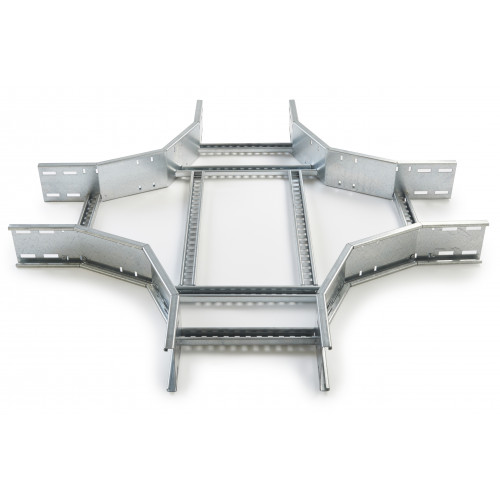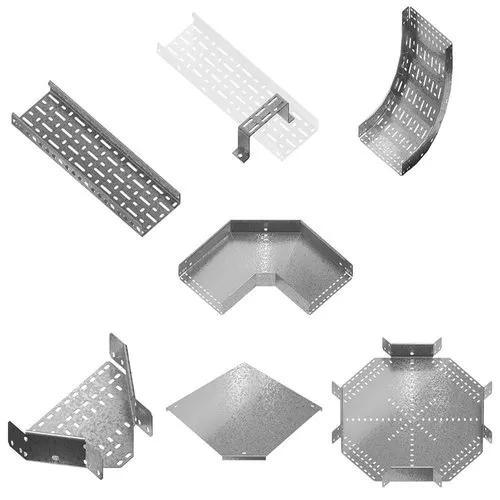Electrical cable trays are an integral part of modern electrical installations, providing a structured, organized, and secure route for cables and wiring systems. Their installation is critical in maintaining safety standards, reducing the risk of electrical accidents, and ensuring the longevity of your electrical infrastructure. This extensive guide delves deep into the comprehensive process of installing electrical cable trays, from preliminary design considerations to final inspection, with detailed steps, safety measures, and compliance with relevant regulations.
Step 1: Project Planning and Design
Requirements Analysis: Start by assessing the project’s requirements, considering the types and quantities of cables that need routing, their current carrying capacity, voltage levels, and future expansion plans. This will help determine the size, shape, and material (metal, PVC, or fiberglass) of the cable trays required.
Site Survey: Conduct a thorough site survey to identify potential routes, taking into account structural constraints, fire ratings, environmental factors, and accessibility for maintenance. Note any obstructions, penetrations, or points where tray supports can be anchored.
Design Layout: Develop a detailed layout using AutoCAD or other engineering software. The design should include precise dimensions, tray sections, bends, and transitions, as well as support spacing and locations. Ensure compliance with the National Electric Code (NEC), International Building Code (IBC), or other local regulatory guidelines.
Step 2: Material Selection and Preparation
Procurement: Purchase the appropriate cable trays, accessories, and fasteners based on your design. Be sure to choose materials with the right corrosion resistance, load-bearing capacity, and fire retardant properties as per the project specifications and codes.
Pre-Fabrication: For complex designs, pre-fabricate customized sections at a workshop, including cutting, bending, drilling, and welding if necessary. Ensure all fabricated components meet industry standards and tolerances.
Component Inventory: Organize and inventory all parts, including brackets, hangers, bolts, nuts, grounding kits, and clamps. Check that all hardware meets the manufacturer’s recommendations and complies with applicable codes.
Step 3: Installation Procedures
1. Installation of Supports: Install the structural supports for the cable tray system. This may involve attaching strut channel, threaded rod hangers, or direct-to-concrete anchors following the manufacturer’s instructions and code-compliant methods.
2. Mounting the Cable Tray: Begin installation from one end of the designated path, securely fixing the first section of the tray onto its supports, making sure it is level and plumb. Use torque wrenches to tighten bolts to recommended specifications.
3. Splicing and Expansion Joints: As you progress, join tray sections using splice plates, couplers, or expansion joints, ensuring they’re properly aligned, connected, and braced to prevent sagging or movement. Follow manufacturers’ guidelines for joining and sealing joints to maintain integrity and water-tightness.
4. Support Spacing and Alignment: Continuously check the tray alignment and adjust supports as needed to maintain proper spacing according to the manufacturer’s recommendations and NEC guidelines. Over long spans or when carrying heavy loads, additional intermediate supports might be required.
5. Routing Cables: Once the cable tray system is installed, route cables through the tray, adhering to separation requirements and fill ratios. Properly secure cables using ties or clips, avoiding sharp bends and kinks. Clearly label and document each cable run for easy identification and maintenance.
6. Grounding and Bonding: Implement a robust grounding and bonding strategy throughout the cable tray system. This includes connecting the trays to the building’s earth electrode system via ground bars or straps, and ensuring continuity of the grounding conductor along the entire length of the tray.
Step 4: Safety Measures During Installation
Personal Protective Equipment (PPE): Always wear PPE such as hard hats, safety glasses, non-conductive gloves, and boots while working on the installation. Ensure tools are rated for electrical work and are regularly inspected.
Worksite Safety: Clear the area of debris and conduct a job hazard analysis to mitigate risks like falling objects, electrocution, and tripping hazards. Use barricades and warning signs as needed.
Step 5: Testing, Inspection, and Commissioning
Inspection: After installation, inspect the entire cable tray system meticulously, checking for correct assembly, secure attachments, and adequate clearance from combustible materials. Confirm all cables are properly routed and secured within the trays.
Testing: Perform electrical testing, including continuity checks, insulation resistance tests, and fault loop impedance tests, as per the electrical codes and project specifications.
Final Approval: Obtain approval from a certified electrical inspector before energizing the system. They will verify that the installation adheres to all applicable codes and standards.
Conclusion:
Installing electrical cable trays demands precision, attention to detail, and strict adherence to safety protocols and regulatory requirements. This extensive guide provides a roadmap for professionals and DIY enthusiasts alike, emphasizing the importance of every step in achieving a reliable, safe, and efficient cable management system. Remember that safety must always come first, and consulting with experienced electricians and inspectors is crucial for successful execution. Document your work thoroughly to facilitate future inspections, repairs, and modifications.



